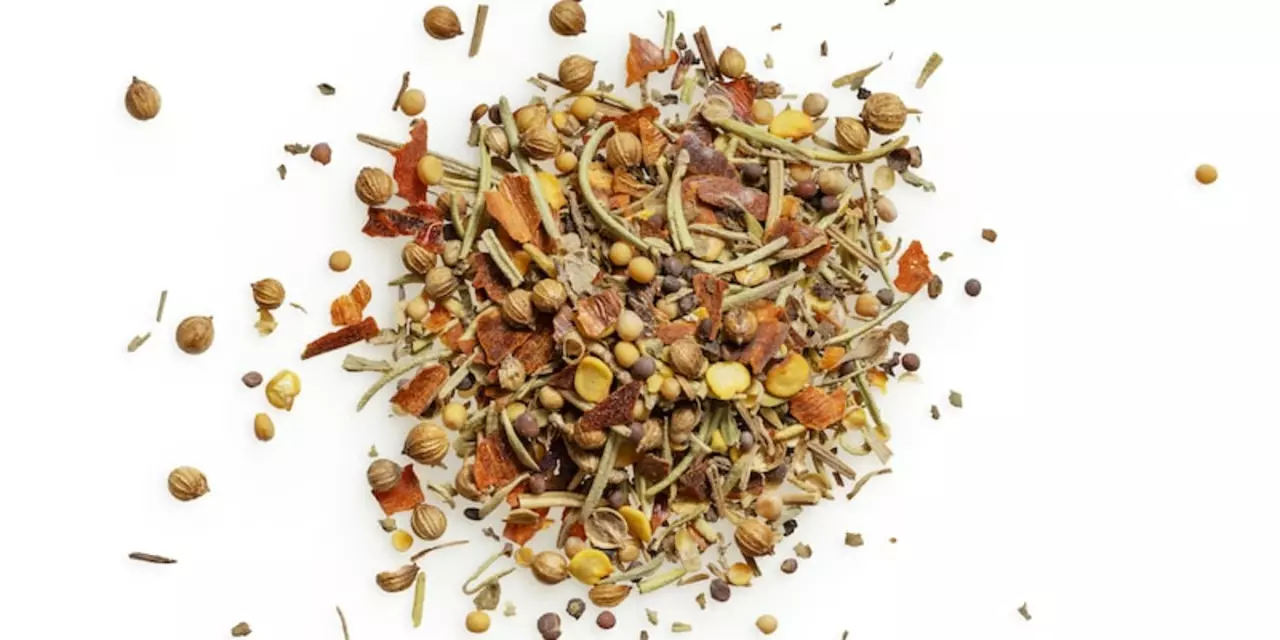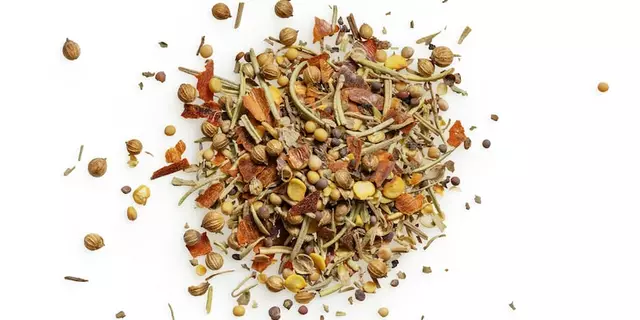Exploring the History of Spicy Indian Cuisine
The Indian subcontinent is home to some of the world's spiciest and most flavorful cuisines. From the fragrant curries of the North to the fiery vindaloos of the South, Indian food is renowned for its unique flavor profiles and heat levels. But how did Indian food become so spicy?One of the main culprits behind spicy Indian cuisine is the abundant use of chili peppers. Chilies were introduced to India by Portuguese traders in the 16th century and quickly became popular in the region. Today, Indian cooks use a wide variety of chili peppers to add heat to their dishes, including the famous red and green chilies found in most Indian restaurants.
Another key factor in the spiciness of Indian cuisine is the extensive use of a variety of spices. From cumin and coriander to cardamom and turmeric, each region in India has its own unique blend of spices. These spices are used to enhance the flavor of dishes and to add an extra kick of heat.
Finally, Indian food is often cooked in ghee or clarified butter, which has a high smoking point that allows for high-heat cooking. This method of cooking helps to create the distinct flavor and crunch of many Indian dishes, as well as adding an extra layer of spiciness.
It is clear that chili peppers, spices, and high-heat cooking methods all contribute to the spiciness of Indian food. Over centuries, cooks have perfected the art of creating dishes that are both flavorful and fiery hot. So, while it may not be the spiciest food in the world, Indian cuisine certainly has its fair share of heat.
A Comprehensive Guide to the Regional Variations of Spicy Indian Dishes
When it comes to Indian food, there’s a common misconception that it is all extremely spicy. However, this is far from the truth. Indian cuisine is incredibly varied and the level of spice in dishes can vary significantly based on region. To help clear up any confusion, this article will provide a comprehensive guide to the regional variations of spicy Indian dishes.The North
In North India, the cuisine is characterized by its abundance of dairy products such as ghee and yogurt, as well as its use of spices like garam masala. Dishes such as butter chicken, daal makhani, and palak paneer are popular choices. These dishes are usually not too spicy but can be made spicier with the addition of green chilies.
The South
The cuisine of South India is known for its use of coconut, tamarind, and spices such as curry leaves, mustard seeds, and asafetida. Popular dishes include idli, dosa, and sambar. These dishes are usually spicier than those from the North, with the addition of chili peppers and other spices.
The East
The cuisine of East India is characterized by its use of mustard oil, fish, and spices including cumin, turmeric, and coriander. Popular dishes include Bengali fish curry and kosha mangsho, which is a spicy curry made with goat meat. These dishes are generally quite spicy, with the addition of green chilies and other spices.
The West
The cuisine of West India is characterized by its abundance of seafood dishes and its use of spices such as garam masala, kokum, and asafoetida. Popular dishes include Goan fish curry and Kolhapuri chicken, which are both quite spicy.
Overall, the level of spiciness in Indian food can vary significantly based on which region the dish is from. But regardless of the region, the dishes are usually flavorful and incredibly delicious.
The Health Benefits of Spicy Indian Food
Indian food is renowned for its spiciness. Spices are used in Indian cooking to not only add flavor, but also to provide health benefits. Spicy foods have been linked to a variety of health benefits, from improved digestion to better heart health.Spicy foods can help improve digestion. Spices like cumin, turmeric, and garam masala contain substances that help increase the production of stomach acids and digestive enzymes, which can help break down food more efficiently. This can result in improved digestion and better absorption of nutrients from the food you eat.
Spicy food has also been linked to improved heart health. Spicy foods contain a variety of compounds that can help reduce inflammation, improve blood flow, and even reduce the risk of developing high cholesterol levels. This can help to improve overall heart health and reduce the risk of stroke and heart attack.
Spicy foods can also help boost the immune system. Spices contain compounds that can help fight off viruses and bacteria, helping to keep you healthy and reduce the risk of illness.
Finally, spicy food can help reduce stress. Eating spicy food increases the production of endorphins, the body’s natural feel-good hormones. This can help reduce stress levels and improve your overall mood.
It’s clear that spicy Indian food can provide a variety of health benefits. Not only does it add flavor to your meals, but it can also help improve digestion, heart health, immunity, and even reduce stress. So the next time you’re looking to add some zing to your meals, try some Indian food!
The Science Behind the Spiciness of Indian Dishes
Indian food has a reputation for being spicy, but is it really? The answer is a bit more complicated than a simple yes or no. While some dishes are indeed spicy, the spiciness of Indian food depends on the dish, the region it’s from, and the cook who is making it.When it comes to the science behind the spiciness of Indian dishes, it all comes down to one key ingredient: chili peppers. Chili peppers contain capsaicin, a compound that gives peppers their pungent flavor and heat. The amount of capsaicin in chili peppers can vary depending on the variety, so the spiciness of a dish can vary depending on the type of chili pepper used.
Another factor to consider is the region in which the dish is made. Depending on the region, recipes can vary greatly. For example, dishes in the northern part of India tend to be spicier than dishes in the south. This is because the northern part of India is more prone to hot, dry weather, which results in spicier peppers.
Finally, the spiciness of a dish will also depend on the cook making it. Some cooks prefer spicier dishes, while others like to tone down the heat. If a cook prefers spicier dishes, they may add more chili peppers to the recipe than what is traditionally used.
When it comes to Indian food, the spiciness of a dish really depends on the ingredients and the cook. While some dishes are indeed spicy, others are more mild. Ultimately, the spiciness of Indian dishes is subjective and can vary greatly depending on the region and the cook.
Popular Spicy Indian Recipes to Try at Home
Indian food is renowned for its spiciness, and for good reason. There are countless dishes from various regions of India that use various spices and herbs to give them their signature flavor. From the fiery vindaloos of Goa to the flavorful biryani of Hyderabad, there is no shortage of spicy Indian recipes to try. Here are some of the most popular spicy Indian recipes to try at home.Vindaloo – Vindaloo is a popular spicy dish from the state of Goa. It is a combination of vinegar, garlic, ginger, chili peppers, and other spices. This combination of flavors creates a unique and flavorful dish that is sure to please all.
Butter Chicken – Butter chicken is another popular dish from India. The dish is made with marinated chicken cooked in a spicy tomato-based sauce. The sauce is flavored with a variety of spices such as cumin, garam masala, and coriander.
Chana Masala – Chana masala is a vegetarian dish made with chickpeas and spices. It is often served with either roti or naan bread. The spices used in this dish vary, but typically include cumin, coriander, turmeric, and red chili powder.
Pav Bhaji – Pav bhaji is a popular street food dish from Mumbai. It is a combination of mashed vegetables cooked in a spicy tomato-based sauce and served with a soft, buttered pav (bun).
Samosas – Samosas are a popular deep-fried snack made with a potato and pea filling. They are typically served with a spicy chutney for dipping.
These are just a few of the many spicy Indian dishes you can try at home. Whether you’re looking for an easy weeknight meal or a flavorful dish to impress your guests, there is sure to be a spicy Indian recipe that’s perfect for you.






Write a comment